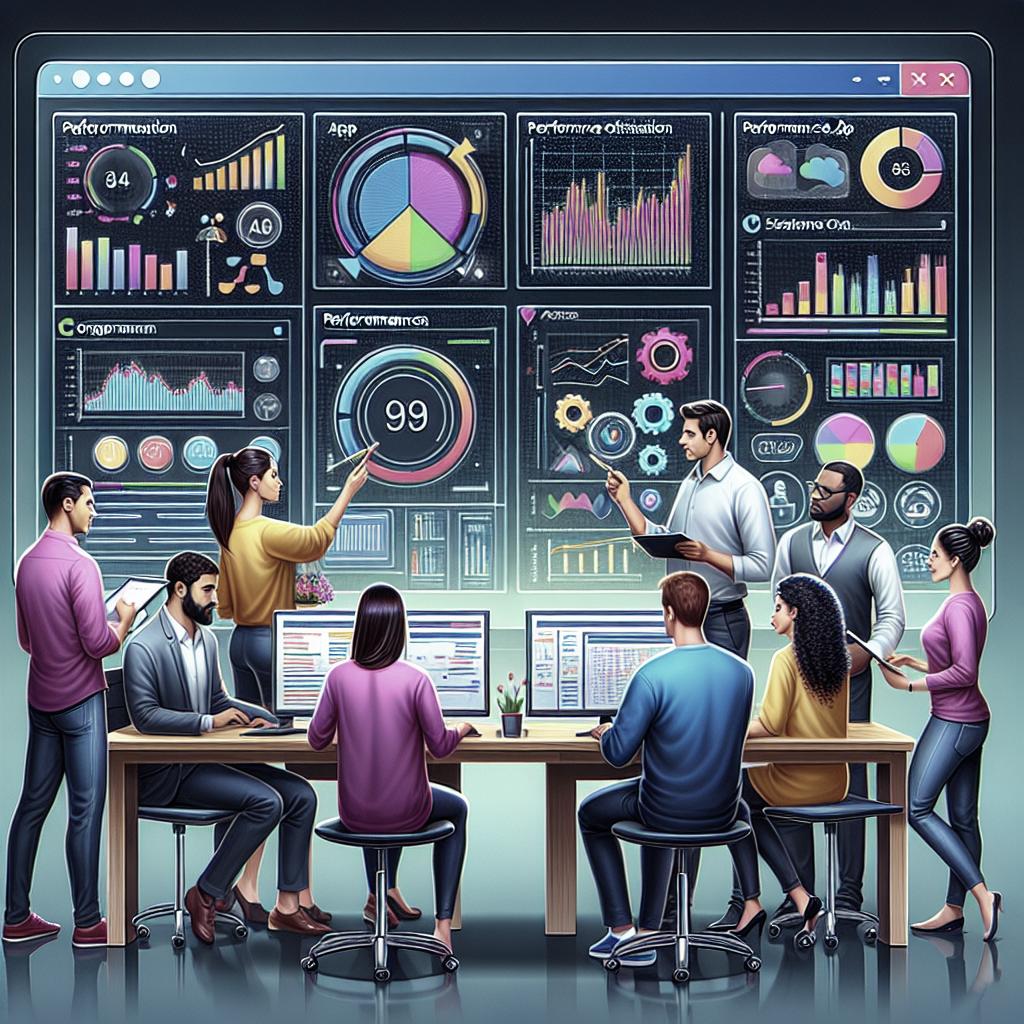The Advantages of SaaS-Based Mobile Applications
In the dynamic world of technology, Software as a Service (SaaS) has revolutionized how we perceive and interact with mobile applications. This blog post takes a deep dive into the current and emerging trends within the SaaS ecosystem, highlighting how innovations like cloud computing, AI integration, and the rise of vertical SaaS are shaping modern business practices. We will also explore the myriad benefits of SaaS-based applications, from cost efficiency to scalability and enhanced security. Furthermore, a glimpse into the future of SaaS will illuminate its potential impacts on businesses, users, and the environment. To cap it all, we’ve summarized key insights in a table to facilitate your next steps in leveraging SaaS technologies. This comprehensive guide is your roadmap to understanding why SaaS mobile applications stand at the forefront of digital innovation.
The SaaS Revolution: A Deep Dive into Trends
Cloud Computing as a Catalyst
Cloud computing has been pivotal in propelling the adoption of SaaS-based applications, providing the necessary infrastructure to host applications that are easily accessible over the internet. This shift has allowed businesses to move away from traditional on-premise software installations and leverage the power of the cloud to deliver services more efficiently.
The flexibility offered by cloud-based solutions enables organizations to scale their operations according to demand. This elasticity ensures that businesses only pay for the resources they use, reducing waste and optimizing expenditure. Cloud computing also enhances collaboration, allowing teams to access and share information seamlessly from any device.
The Rise of Vertical SaaS
Unlike horizontal SaaS, which provides solutions across various industries, vertical SaaS focuses on niche markets, offering tailored solutions that cater to specific industry needs. This specialization allows businesses to incorporate industry-specific features, which in turn improves efficiency and effectiveness.
Vertical SaaS providers often benefit from a deep understanding of industry regulations and challenges, crafting solutions that address these intricacies directly. This trend not only refines service delivery but also enhances customer satisfaction by providing features that are directly aligned with users’ daily operations.
Integration and the API Economy
The API economy has revolutionized how SaaS applications interconnect, allowing disparate systems to communicate and share data efficiently. APIs enable seamless integration between different software products, providing users with a consistent and unified experience across multiple platforms.
By fostering interoperability, APIs reduce the complexity of managing several tools and applications. This connectivity allows businesses to automate workflows, synchronize data in real-time, and create personalized services for their customers, thus driving innovation and competitive advantage.
Mobile-First and Responsive Design
As mobile devices become the primary interface for engaging with software, the focus on mobile-first and responsive design has intensified. SaaS providers are prioritizing the development of mobile applications that not only adapt to different screen sizes but also offer an intuitive user experience.
Mobile-first strategies ensure that applications are designed with the mobile user in mind from the outset. Responsive design techniques optimize the interface across a range of devices, ensuring functionality and aesthetic appeal. This pivot to mobile is crucial for maximizing engagement and accessibility.
AI and Machine Learning Integration
Artificial Intelligence (AI) and Machine Learning (ML) are increasingly being integrated into SaaS applications, offering powerful new tools for businesses. These technologies provide advanced data analytics capabilities, enabling deeper insights and better decision-making processes.
SaaS solutions infused with AI can automate repetitive tasks, analyze vast datasets for trends and patterns, and deliver personalized experiences to users. As AI continues to evolve, its integration into SaaS platforms promises to enhance operational efficiency and customer engagement profoundly.
Cybersecurity as a Cornerstone
As digital landscapes evolve, cybersecurity remains a paramount concern for SaaS providers and users alike. Protecting sensitive information against data breaches and cyber threats is critical for maintaining trust and compliance.
SaaS companies are investing heavily in enhancing their security protocols, employing advanced encryption methods, multifactor authentication, and proactive threat monitoring. By prioritizing cybersecurity, SaaS applications safeguard both corporate data and personal information, ensuring robust protection against potential threats.
Emerging SaaS Trends
Low-code/No-code Development
The low-code/no-code movement is democratizing software development, allowing individuals without extensive programming knowledge to create and deploy applications. This trend is accelerating the SaaS domain by enabling faster prototyping and reducing development costs.
These platforms empower businesses to innovate rapidly, adapt quickly to market changes, and involve non-technical stakeholders in the development process. By lowering barriers to entry, low-code/no-code development is fostering a new wave of creativity and innovation in SaaS applications.
SaaS and the Internet of Things (IoT)
Integrating SaaS with the Internet of Things (IoT) is unlocking new possibilities for interconnected devices and automated processes. By utilizing SaaS platforms, businesses can efficiently manage IoT devices, collect data, and gain insights into operations.
This convergence aids in process optimization and asset management, enabling predictive maintenance and real-time monitoring. As IoT adoption continues to grow, SaaS solutions will play a crucial role in harnessing the full potential of this technology, bridging the gap between the digital and physical realms.
Augmented Reality (AR) and Virtual Reality (VR) Integration
Augmented Reality (AR) and Virtual Reality (VR) integration into SaaS applications is gradually changing how users interact with digital content, providing immersive experiences that enhance engagement and user interaction.
These technologies are particularly impactful in industries like real estate, healthcare, and education, where visualizations can offer more realistic training simulations or marketing experiences. By leveraging AR and VR, SaaS applications are poised to transform traditional workflows and user experiences.
Subscription Model Innovations
The subscription model remains a cornerstone of SaaS offerings, allowing businesses to generate recurring revenue while providing flexible, customer-centric service options. Recent innovations include performance-based pricing and customizable subscription bundles.
By tailoring subscription models to better suit user needs, SaaS providers can enhance customer satisfaction and retention. This evolution in subscription strategies aligns with a growing demand for personalized services, offering clients greater control over their software expenditures.
Blockchain and SaaS
Blockchain technology, known for its transparency and security, is increasingly being adopted within SaaS applications to facilitate secure transactions and verify the authenticity of data.
Blockchain integration within SaaS solutions ensures tamper-proof records and enhances trust in digital transactions. This technology has the potential to disrupt traditional business models by offering decentralized alternatives and fostering innovation across various sectors.
Edge Computing and SaaS
Edge computing is emerging as a vital complement to cloud-based SaaS solutions, enabling data processing closer to the source and reducing latency for real-time applications.
By bringing computational resources to the edge of the network, SaaS applications can offer enhanced performance and responsiveness. This capability is essential for applications with real-time data requirements, such as IoT devices and AI-driven systems.
The Benefits of SaaS Based Apps
Cost Efficiency
One of the primary advantages of SaaS-based applications is their cost efficiency. By eliminating the need for costly hardware and extensive IT infrastructure, businesses can reduce upfront investment and operational expenses.
The subscription-based pricing model allows organizations to manage their cash flow effectively, ensuring predictable spending and the ability to scale resources as needed. This financial flexibility makes SaaS an attractive option for startups and established companies alike.
Scalability
SaaS applications are inherently scalable, allowing businesses to adjust their software usage based on current needs without significant overhead. This flexibility is crucial for accommodating growth and unexpected demand spikes.
By leveraging cloud capabilities, companies can add or reduce resources with ease, ensuring optimal performance and efficient resource management. This scalability supports business agility, providing the means to adapt quickly to market changes and customer requirements.
Accessibility and Convenience
SaaS-based applications offer unparalleled accessibility and convenience, enabling users to access services from anywhere, at any time, using any device with an internet connection.
This ubiquitous availability fosters remote work, collaboration across geographical boundaries, and enhances operational flexibility. By reducing the dependence on physical infrastructure, SaaS applications empower users with the freedom to work more effectively and efficiently.
Automatic Updates and Maintenance
With SaaS applications, software updates and maintenance are managed by the service provider, ensuring that users always have access to the latest features and security patches without interruption.
This hands-off maintenance approach reduces the administrative burden on in-house IT teams, allowing businesses to focus on strategic initiatives. Automatic updates also ensure that users benefit from continuous improvements, enhancing the overall user experience.
Collaboration and Productivity
SaaS applications facilitate enhanced collaboration and productivity, providing tools and platforms that support teamwork and streamline workflows.
Features such as shared document access, real-time editing, and communication integrations improve team coordination and efficiency. By simplifying collaboration, SaaS solutions foster a more cohesive and productive working environment.
Enhanced Security
Security is a core focus for SaaS providers, leveraging advanced technologies to protect sensitive information and ensure regulatory compliance. Data encryption, multi-factor authentication, and continuous monitoring are standard practices within reputable SaaS services.
By adhering to stringent security standards, SaaS applications offer a robust defense against cyber threats and data breaches, maintaining user trust and safeguarding valuable data assets.
Analytics and Insights
SaaS applications often come equipped with powerful analytics tools that enable businesses to gather and analyze data-driven insights. These capabilities are invaluable for informed decision-making and strategic planning.
By offering real-time data analytics, SaaS solutions help organizations uncover trends, track performance metrics, and identify areas for improvement. This level of insight can be transformative, driving better business outcomes and competitive advantage.
The Future of SaaS
Predictions for the SaaS Industry
The future of SaaS looks promising, with continual advancements in technology shaping the industry’s trajectory. Trends such as AI integration, edge computing, and IoT are expected to redefine the SaaS landscape, offering unprecedented opportunities for innovation and growth.
As businesses increasingly rely on digital solutions, SaaS providers that prioritize adaptability and customer-centric approaches will be positioned for success. The evolution of SaaS will likely bring forth new features and capabilities that further enhance usability and performance.
The Impact of SaaS on Businesses and Users
SaaS has already had a significant impact on businesses and users, transforming how software is consumed and delivered. By providing flexible, scalable, and cost-effective solutions, SaaS applications empower companies to optimize operations and improve overall efficiency.
For users, SaaS represents convenience and accessibility, offering easy access to important tools and services. As technology advances, the impact of SaaS will continue to grow, enabling more personalized and engaging user experiences.
Environmental Impact of SaaS
The environmental impact of SaaS is an essential consideration, as cloud computing can both positively and negatively affect sustainability efforts. On one hand, SaaS reduces the need for physical infrastructure, resulting in lower energy consumption and emissions.
On the other hand, data centers that support SaaS operations can contribute to environmental strain. As such, SaaS providers are increasingly focused on implementing green practices, such as using renewable energy sources and optimizing resource efficiency, to mitigate these effects.
Regulatory and Compliance Trends
Regulatory compliance is a vital component of SaaS operations, influencing how providers manage data and ensure users’ privacy. Adhering to standards like GDPR and HIPAA necessitates robust data protection measures and transparent practices.
As data privacy concerns rise, regulations will likely become more stringent. SaaS providers must stay ahead of compliance trends, ensuring that they meet evolving requirements and maintain user trust through transparent data handling practices.
FAQ’s
1. What is SaaS?
Software as a Service (SaaS) is a cloud-based software delivery model where applications are hosted by a service provider and made available to customers over the internet.
2. How does SaaS impact small businesses?
SaaS provides small businesses with access to sophisticated tools and applications at an affordable cost, enhancing their competitiveness and operational efficiency.
3. What are the security measures for SaaS applications?
Security measures for SaaS applications include data encryption, multi-factor authentication, continuous monitoring, and compliance with industry standards like GDPR.
Next Steps
| Topic | Key Insights |
|---|---|
| The SaaS Revolution | Cloud computing enables scalability; Vertical SaaS focuses on specialized needs; API economy enhances integration. |
| Emerging SaaS Trends | Low-code development democratizes innovation; IoT and AR/VR integration offer new possibilities; Edge computing improves real-time processing. |
| Benefits of SaaS Apps | Cost efficiency and scalability; automatic updates ensure latest features; enhanced security and collaborative tools improve productivity. |
| The Future of SaaS | AI and IoT to redefine SaaS; regulatory trends focus on data protection; environmental sustainability gains importance. |
This HTML document outlines a comprehensive blog post structured under various subheadings, covering the advancements, benefits, and future trends of SaaS-based mobile applications. The table at the end summarizes the key insights from the blog post, providing readers with a quick overview for the “Next Steps” in leveraging SaaS technologies.


